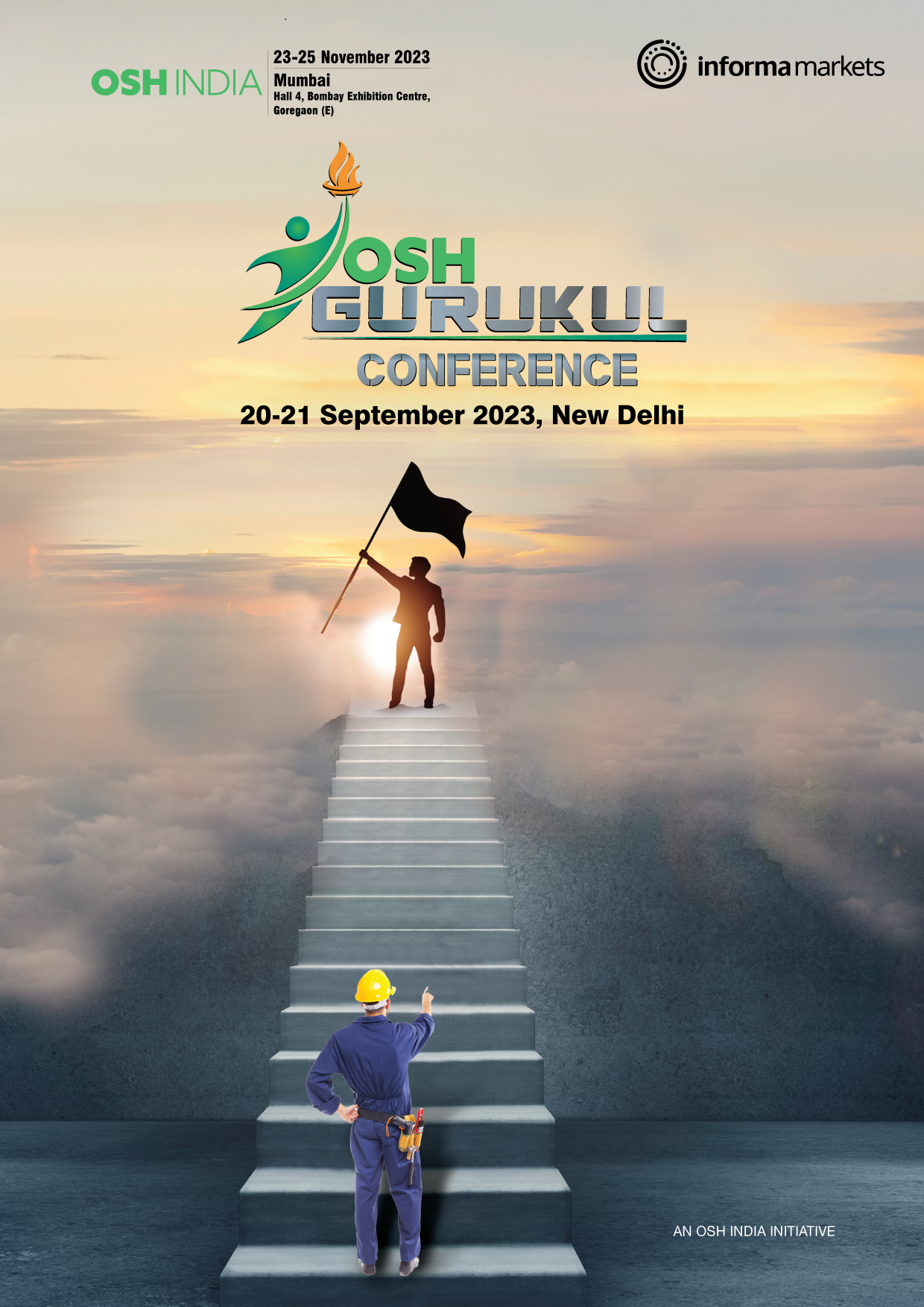OSH Gurukul Conference on September 20-21 2023 at Hotel Pride Plaza, Aerocity, New Delhi
Delhi NCR region is a key hub of industrial activities, with each industry having a prominent stake in implementing occupational safety and health practices for wellbeing of their employees. Some of the key challenges faced by the workforce include: Working without wearing proper safety equipment, ergonomically poor office equipment, mental wellbeing challenges in an uncertain economy, fire safety issues, hazardous chemicals exposure, excessive pollution, poor road safety norms, poor environment sustainability processes, etc. This conference aims to look at the industry pain points related to occupational safety and health and will present the views of senior leader and influencers from the industry.
The industrial development in the region has led to new industries being set up which use modern and advanced machinery and processes as part of the manufacturing, construction, and services sectors. This has also led to millions of workers finding jobs in factories and sites of different scale thus exposing them to occupational hazards in the form of personal safety and health and mental wellbeing and hygiene. The COVID-19 pandemic has also brought about a completely different set of challenges which most organisations are slowly coming to terms with.
The widespread industrial activity requires specialist knowledge of occupational safety and health laws and processes, most of which are routinely implemented and followed by leading industrial corporations in India and abroad. The HSE practitioners within these organisations have a vast experience of implementing these laws and processes and have scaled many a height in overcoming safety and health challenges withing their organisations. However, it is the small and mid-size (SME) organisations that still struggle with the knowledge and implementation of OSH laws and best practices and hence are a cause of grave risk to worker safety and health within their fold.
The OSH Gurukul conference is a key summit of knowledge leaders within HSE community of Delhi NCR that will draw on the experience of HSE veterans in large Indian industries and take their experiences to the junior workforce, thereby fulfilling the ambitious goal of bridging OSH divide within industries.
Key attendees -:
A blend of senior end user community which includes around 120 Safety officers, Health officers, Wellness officers, Environment Sustainability officers, Road Safety officers, etc.
Key conference topics include -:
- CPD Session by NEBOSH, UK.
- Errors and Violations in HSE: Understanding why they happen.
- Panel discussion: Building a positive safety culture Where to Start?
- Safe Driving: How to create defensive drivers.
- Working at Height: Focus on Scaffolds!
- Panel discussion: Getting to the root of the incidents and how to benefit from incidents.
- Ensuring Safe Lifting and Rigging Operations.
- EHS Objectives: Should they be Active or Reactive?
- Emergency Preparedness & Response: Where we lack?
- Characteristics of a High Reliability Organization (HRO).
- Managing Health and Safety within supply chains: Why modern slavery should be managed within supply chains.
- Managing work related violence.
Risk Management It And Assessment -:
Risk management can be defined as the collection of culture, process structures that are directed towards realizing potential opportunities while managing adverse effects. It can be defined as a systematic application of Management policies, procedures and practices. The risk management also incorporates several other tasks such as identifying, analyzing, evaluating and monitoring risk ok and reviewing risk.
Risk assessment is carried out on the use of methods, tools and risk assessment schemes. This or an unlimited number of strengths and weaknesses the approach and method of recording the results, analysis in Fault trees,Even trees and in spreadsheets. Even trees and in spreadsheets.
The schemes of risk analysis in trees are focused on a determined chain of events. While the spreadsheet methods are true to address the full scope of risk assessment(identification, analysis and evaluation).
The hazards and operability studies qualitative methods developed to identify risks and operating problems through the effects of deviations from design condition in industrial process place plants.
Qualitative Risk Analysis -:
The method with qualitative risk analysis is also based on the principle of brainstorming for creative development scenarios and finding the cases of deviations to identify safety functions.
Hazop Study For Quantitative Risk -:
Traditionally HAZOP study and process hazard analysis held separately producing two databases. HAZOP technique is grounded by word application (such as more or less) to each process variable(temperature, flow, pressure). On the other hand PHA risks allows the definition of the rich position to prioritize the use of frequency and severity categories as a risk value.
Quantitative Approach Of Hazop -:
- Aim is for integration with the risk of matrix. Because of this method east use the HAZOP and diagnosis method).
- Parameters, guide word and deviation for each node).
- From that, causes of consequences related to deviation are investigated.
- From the HAZOP spreadsheet:
- Guide word/ deviation/ cause/ consequence.
- PHA tool:
- Frequency/ Severity/ Risk/ mitigation.
By V. Narasimhan, Chief consultant- Safety, NARASIMHAANS Safety



